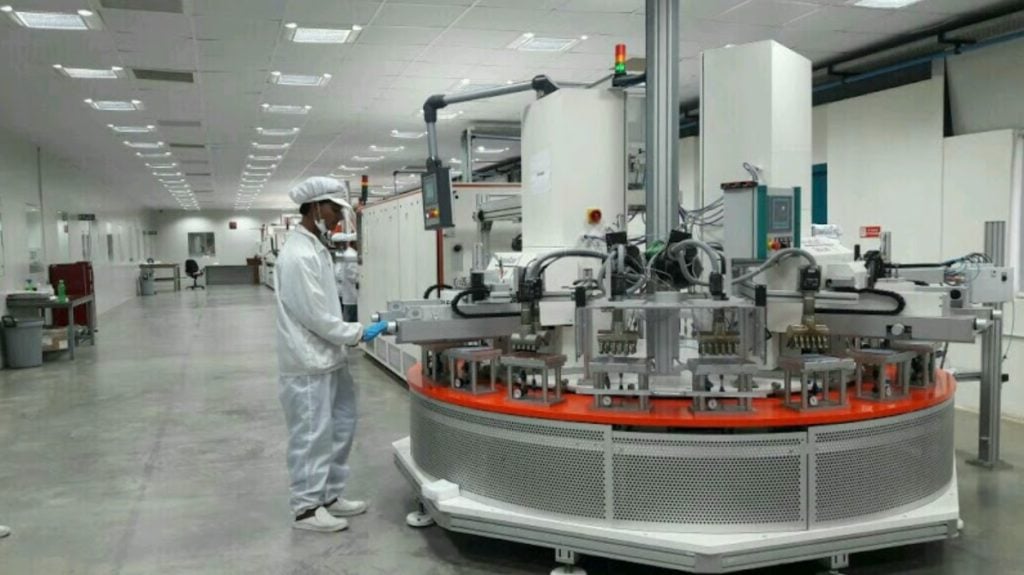
Indian PV makers have welcomed the government’s plan to add solar wafers to its Approved List of Models and Manufacturers (ALMM) List-III from June 2028.
In its latest draft, India’s Ministry of New and Renewable Energy (MNRE) mandates that all government-backed ALMM projects source modules from List-I manufacturers, cells from List-II companies, and wafers from the forthcoming List-III suppliers. The policy aims to incentivise reliance on domestic production across all segments of solar production.
Try Premium for just $1
- Full premium access for the first month at only $1
- Converts to an annual rate after 30 days unless cancelled
- Cancel anytime during the trial period
Premium Benefits
- Expert industry analysis and interviews
- Digital access to PV Tech Power journal
- Exclusive event discounts
Or get the full Premium subscription right away
Or continue reading this article for free
The update drew a positive response from the top-tier Indian wafer manufacturers. Talking to PV Tech, Premium Energies’ chief business officer Vinay Rustagi said: “This is a much-needed move and a logical next step in making India self-reliant in solar manufacturing. We believe that the policy is very well thought out and is aligned with the government’s intent.”
Furthermore, he added that the company is “looking to accelerate our plans to create 10GW ingot-wafer capacities to match our downstream operations in the anticipated timeframe. We also believe that the policy, by developing a completely non-China supply chain, opens an attractive export opportunity to countries seeking alternative supply sources.”
Under the new framework, the ALMM List-III for solar wafers will only be published once at least three independent manufacturers have set up wafer facilities – with no common ownership or control – and collectively reach a minimum annual capacity of 15GW.
Additionally, to qualify for inclusion in the list, manufacturers must have ingot manufacturing capacity equivalent to their proposed wafer capacity. This means the listed wafer capacity will effectively reflect integrated ingot and wafer production.
Amit Paithankar, CEO of Waaree Energies, told us that this proposed extension of the ALMM framework “is a definite step toward establishing India’s end-to-end solar manufacturing leadership”.
“By setting rigorous quality and capacity benchmarks for inclusion in List-III and aligning module procurement with domestically sourced wafers, this policy will drive true backward integration, boost self-reliance, and safeguard the integrity of India’s solar supply chain.
“Waaree Energies welcomes this forward-looking move and is well prepared for the transition, with active investments in upstream wafer and ingot capacity.”
According to the draft guidelines, projects exempted from using ALMM-listed solar cells will also be exempt from the requirement to source wafers from ALMM-listed manufacturers. Projects covered by the ALMM and bid out within one month of the first ALMM wafer list issuance will be exempt from sourcing wafers from List-III, even if commissioned after June 2028.
Moreover, projects covered under the ALMM with bid deadlines after the cut-off must include a clause requiring modules, cells and wafers to come from manufacturers listed in ALMM List-I, List-II, and List-III, respectively. From the effective date, only modules using cells from List-II, which in turn use wafers from List-III, will remain eligible for ALMM List-I.
ALMM framework: Strengthening India’s domestic solar supply chain
The ALMM for solar PV modules, published by MNRE, is a mandatory list of solar modules and cells that have passed stringent quality and efficiency evaluations. Introduced on 10 April 2021, the framework initially covered modules (List-I) and aims to protect consumers, promote domestic manufacturing and ensure energy security.
The framework was temporarily suspended in March 2023 due to limited domestic manufacturing capacity but was reinstated on 1 April 2024. The ALMM was later expanded to include solar PV cells (List-II), with mandatory use of approved cells scheduled from 1 June 2026.
The ALMM List-II for solar cells includes six manufacturers: Emmvee, Premier Energies, ReNew PV, Jupiter International, Adani Solar subsidiaries Mundra Solar Energy and Mundra Solar PV, and First Solar’s Indian subsidiary.
The framework aims to shield domestic manufacturers from Chinese imports and allows only approved models and manufacturers to participate in government-backed solar projects.
Earlier this year, India crossed 100GW of cumulative solar capacity, becoming the world’s fourth-largest PV market, while domestic module manufacturing jumped from 2.3GW in 2014 to over 100GW in August 2025.






